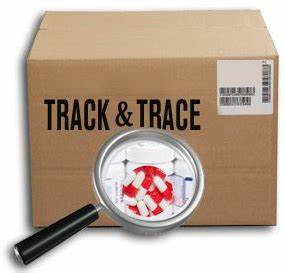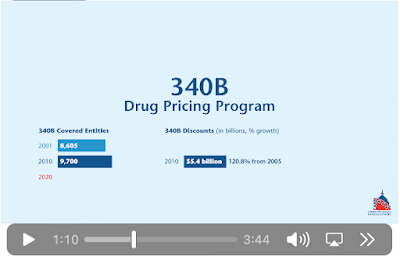By: Marcus J. Hopkins, Founder & Executive Director, Appalachian Learning Initiative
The Health Resources and Services Administration (HRSA) has released the AIDS Drug Assistance Program (ADAP) Annual Client-Level Data Report, 2020. These data reflect the demographic characteristics of clients served by the ADAP program from 2016-2020. This is the second Annual Client-Level Report released in 2020, with the first covering years 2016-2019, and is the first report to include client-level information from the first year of the COVID-19 global pandemic.
Increasing ADAP Enrollment
In 2020, 300,785 clients were served by state ADAP programs across the United States—an increase of more than 3,500 clients from 2019. While this represents a 1.3% increase in national enrollment numbers from 2019 to 2020, 7 states and 2 territories (Guam & U.S. Virginia Islands) saw enrollment increases or decreases of greater than 10% (Figure 1).
Client enrollment regularly decreases and increases based on a number of factors, including but not limited to:
- Clients becoming newly eligible or ineligible based upon their income
- Clients moving from state ADAP programs to state Medicaid programs
- An increase in new HIV diagnoses and, with the delivery of competent case management services, being enrolled in the program
- Clients moving into or out of states
- Clients passing away
2020, however, was unique due to the impacts of the onset of the COVID-19 global pandemic. The original expectation was that increases in unemployment would drive large increases in ADAP enrollment across the U.S. While national enrollment did increase by 1.6%, 31 jurisdictions actually saw decreases in ADAP enrollment from 2019 to 2020 (Table 1).
Because no one state’s ADAP program is identical to another, the reasons for enrollment increases and decreases are highly specific to each state. That said, significant increases and decreases should be carefully examined to identify service disparities, particularly in states where patients face numerous barriers to accessing care and treatment.
Figure 1. Change in State AIDS Drug Assistance Programs (ADAPs) Enrollment, 2019 to 2020
.png) |
| Photo Source: HRSA, 2022 |
The Demographics of ADAP
78.1% of ADAP clients are cisgender male (i.e., non-transgender male; hereafter referred to as “male”)—a figure that has remained largely unchanged since 2015, and 20.4% were cisgender female (i.e., non-transgender female; hereafter referred to as “female”). 1.6% of ADAP clients identified as transgender (1.3% as transgender female, 0.1% as transgender male, and 0.1% as another gender identity; the total does not equal 1.6% due to rounding).
Similarly, the racial and ethnic demographics of ADAP clients have remained largely unchanged since 2015, with 39.5% of enrollees being Black Americans, 27.6% being Hispanic/Latino, 29.6% being White, and less than 2% each are Asian, American Indian/Alaska Native, Native Hawaiian/Pacific Islander, and people of multiple races. Of the women who are clients of ADAP, over half (56.5%) are Black. ADAP clients from non-White demographics are consistently younger than White enrollees. 60.5% of White enrollees are aged 50+ years, compared with just 48% of clients who are American Indian/Alaska Native, 40.3% of Native Hawaiians/Pacific Islanders, 39.6% of Black Americans, 38.8% of multiracial clients, 37.8% of Hispanic/Latino clients, and 34.4% of Asian clients.
Additionally, ADAP enrollees have continued to overwhelmingly be at the lowest end of the income eligibility scale, with 49.1% of clients earning between 0% - 100% of the Federal Poverty Level (FPL)—$12,760/year for an individual in 2020.
These demographics have all remained largely unchanged over the past decade in no small part because they are reflective of the HIV epidemic, in and of itself. New HIV diagnoses continue to be disproportionately identified in Black, Brown, and lower-income communities. As a result, those clients compose the majority of ADAP clients.
Health Coverage of ADAP Clients
In 2020, 37.4% of all ADAP clients had no healthcare coverage, whatsoever, including private and employer-sponsored insurance, Medicaid coverage, Medicare coverage, Veterans Administration coverage, Indian Health Services coverage, and other types of coverage. This varies by race, with just 20.7% of White clients lacking healthcare coverage compared with 48.2% of Hispanic clients and 42.8% of Black clients. It also varies by gender, with 37.8% of male clients lacking coverage and 36.2% for females. Trans folx and gender non-conforming individuals were disproportionately impacted by a lack of healthcare coverage, with 34.9% of transgender male clients, 52.6% of transgender female clients, and 59.5% of clients with different gender identities lacking coverage.
With the exception of persons who identify as transgender females, every gender demographic saw at least a 1% increase in the number of clients with private individual insurance from 2019 to 2020. Transgender men saw the largest increased in the number of privately insured clients from 2019 to 2020, with just 16.4% of transgender men being privately insured in 2019 and 26.2% being insured in 2020.
Services Utilization of ADAP Clients
The percentage of clients who received only full-pay medication assistance (where ADAP pays the full cost of medications) decreased from 52.6% in 2015 to 47.5% in 2020. This number is expected to decrease as more ADAP programs begin transitioning clients over to other payor models, such as insurance continuation programs, medication co-pay/deductible assistance, or insurance premium assistance. Each of these models represents cost savings for ADAP programs over the full-pay medication assistance service, as the ADAP programs are no longer paying the full cost of medications.
Breaking these services down by Health and Human Services (HHS) Region (Figure 2):
- Region 1, which comprises the New England states, had the highest percentage of ADAP clients using medication co-pay/deductible services, with 42.2% of clients using that service.
- Region 6, which comprises the American South-Central part of the U.S., had the highest percentage of ADAP clients receiving full-pay medication assistance (69.7%), followed by Region 4, which comprises most of the rest of the American South (60.1%)
- Regions 7 and 8, which comprise the central Midwest and Mountain West, had the highest percentages of ADAP clients utilizing multiple ADAP services (49.6% and 46.3%, respectively).
.png) |
| Photo Source: HRSA, 2022 |
Potential Concerns for ADAPs
An emergent concern for state ADAP programs has presented itself in the form of the Monkeypox Virus (MPV) outbreak in the United States.
According to a paper published in September 2022, among 1,969 persons diagnosed with MPV in eight U.S. jurisdictions—California, Los Angeles County, San Francisco, the District of Columbia, Georgia, Illinois, Chicago, and New York state—38% were identified in People Living with HIV/AIDS (PLWHA). Additionally, 41% of those diagnosed had been diagnosed with a Sexually Transmitted Infection (STI) in the preceding year. Among persons with MPV, hospitalization was more common in PLWHA than in those without HIV infection (Curran, et al., 2022).
The concern among many HIV advocates is that MPV may become endemic in the MSM community, particularly among those living with HIV. This aligns with additional concerns on the part of infectious disease and public health experts that COVID-19 may end up becoming endemic.
(Editor's Note: The following portion of this post remains unchanged from our coverage of the 2019 ADAP Client-Level Report in June/July 2022 as circumstances have remained the same since that time).
There are some concerns being circulated that ADAP enrollment may begin increasing in the near future. The onset of the COVID-19 global pandemic resulted in the Secretary of HHS declaring quarterly national Public Health Emergencies (PHEs) beginning in January 2020 (Office of the Assistant Secretary for Preparedness and Response, 2022). One of the provisions of the PHE declarations required states to keep people enrolled in state Medicaid programs throughout the PHE in order to receive the temporary increase in the federal share of Medicaid costs.
When the Secretary fails to renew the PHE, this provision, along with the increased federal funding, will end, meaning that state Medicaid programs will likely begin redetermining eligibility. This could result in an influx of clients moving off of Medicaid and back onto state ADAP programs, which are statutorily required to be the “payor of last resort.”
Additional concerns exist around the reauthorization of the Ryan White HIV/AIDS Program (RWHAP), which has not been reauthorized since 2009. Because the law has no sunset provision, meaning that it can be funded in perpetuity. There have been consistent concerns about reopening RWHAP for reauthorization for fear that Republicans in Congress will gut the program. These concerns have been voiced since at least 2013. As a result, there is little advocacy in favor of reauthorization.
Ultimately, the ADAP program is currently as “safe” as it’s ever been. Waitlists are virtually a thing of the past, meaning that eligible patients are able to gain access to the medications that they need. The ADAP Advocacy Association will continue to monitor the program for both successes and challenges.
To download Table 1 - ADAP enrollment from 2019 to 2020, click here.
References:
- Curran, K.G., Eberly, K., Russell, O.O., et al. (2022, September 09). HIV and Sexually Transmitted Infections Among Persons with Monkeypox — Eight U.S. Jurisdictions, May 17–July 22, 2022. MMWR Weekly 71(36), 1141-1147. http://dx.doi.org/10.15585/mmwr.mm7136a1
- Health Resources and Services Administration. (2022, August). Ryan White HIV/AIDS Program AIDS Drug Assistance Program (ADAP) Annual Client-Level Data Report 2020. Rockville, MD: United States Department of Health and Human Services: Health Resources and Services Administration: HIV/AIDS Bureau: Division of Policy and Data https://ryanwhite.hrsa.gov/sites/default/files/ryanwhite/data/hrsa-adap-data-report-2020.pdf
- Office of the Assistant Secretary for Preparedness and Response. (2022, April 12). Renewal of Determination That A Public Health Emergency Exists. Washington, DC: United States Department of Health and Human Services: Office of the Assistant Secretary for Preparedness and Response: Public Health Emergency Declarations. https://aspr.hhs.gov/legal/PHE/Pages/COVID19-12Apr2022.aspx
Disclaimer: Guest blogs do not necessarily reflect the views of the ADAP Advocacy Association, but rather they provide a neutral platform whereby the author serves to promote open, honest discussion about public health-related issues and updates.









